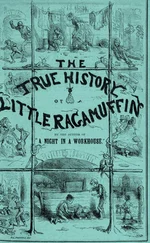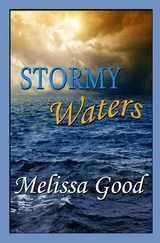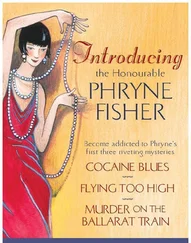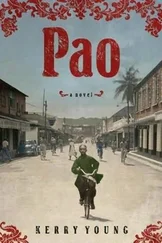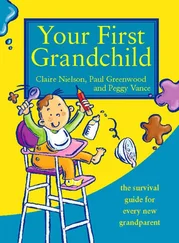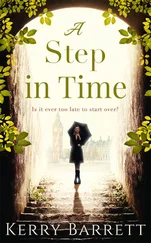Kerry Greenwood - Tamam Shud
Здесь есть возможность читать онлайн «Kerry Greenwood - Tamam Shud» весь текст электронной книги совершенно бесплатно (целиком полную версию без сокращений). В некоторых случаях можно слушать аудио, скачать через торрент в формате fb2 и присутствует краткое содержание. Город: Sydney, Год выпуска: 2012, ISBN: 2012, Издательство: NewSouth, Жанр: Детектив, Прочая документальная литература, на английском языке. Описание произведения, (предисловие) а так же отзывы посетителей доступны на портале библиотеки ЛибКат.
- Название:Tamam Shud
- Автор:
- Издательство:NewSouth
- Жанр:
- Год:2012
- Город:Sydney
- ISBN:978-1-742-23350-5
- Рейтинг книги:3 / 5. Голосов: 1
-
Избранное:Добавить в избранное
- Отзывы:
-
Ваша оценка:
- 60
- 1
- 2
- 3
- 4
- 5
Tamam Shud: краткое содержание, описание и аннотация
Предлагаем к чтению аннотацию, описание, краткое содержание или предисловие (зависит от того, что написал сам автор книги «Tamam Shud»). Если вы не нашли необходимую информацию о книге — напишите в комментариях, мы постараемся отыскать её.
Tamam Shud — читать онлайн бесплатно полную книгу (весь текст) целиком
Ниже представлен текст книги, разбитый по страницам. Система сохранения места последней прочитанной страницы, позволяет с удобством читать онлайн бесплатно книгу «Tamam Shud», без необходимости каждый раз заново искать на чём Вы остановились. Поставьте закладку, и сможете в любой момент перейти на страницу, на которой закончили чтение.
Интервал:
Закладка:
Strange.
There is an excellent book about The Family murders, written by Bob O’Brien, one of the detectives in the case, who puzzles over what it is about Adelaide that makes it produce such bizarre crimes. He is unable to shed any light on the matter but if we return to the idea of cliques, we may have an answer or, at least, the beginning of an answer. If you operate in groups all the time, then if your particular group becomes corrupted, you are all corrupted. That is what happened with The Family and in Snowtown. Even Worrell and Miller were a clique of two. One psychopath is bad but when there are two psychopaths or more, the effect is not so much additional as exponential. That’s why, when Adelaide is good, it is very, very good, and when it is bad, it is horrid.
That’s the closest I can come to a theory. Adelaide is such a straight up and down city that there is no room for any deviation, so when deviation comes, it breaks all the rules. My home city, Melbourne, is also as straight as it comes. A grid system made by Mr Hoddle, with big streets in which one can turn a coach and four and little streets, to keep the service vehicles off the boulevards. Tree lined. Decorative. And, like the old Roman roads, it could have been ruled with a spear shaft. Parliament at the top, Spencer Street Station at the bottom. Square. But somehow Melbourne, in its angularity, allows eccentricity in the lanes and squares and strange little shops and markets. The most attractive Melbourne streetscape is an arcade. And the town hall is in the middle of the city, not at the top like Adelaide.
The Torrens River breaks Adelaide into two unequal parts and that is not good for a city. It means that sometimes the left hand knows not what the right hand is doing. Which would, come to think of it, make Adelaide an admirable place for a nest of spies. (If that is the collective noun. A conspiracy, perhaps?) In true Adelaidian fashion, no outsider would ever know. But everyone inside the clique would…
Chapter Six
How long, how long, in infinite Pursuit
Of This and That endeavour and dispute?
Better be merry with the fruitful Grape
Than sadden after none, or bitter, fruit.
From the days of the International Workers of the World onwards, Communists in Australia were relatively well organised, trade union based, most of them, and thus, well, yes, a clique. They were also very careful. When I was working on the Waterside Workers Federation archives in Canberra, I had to crack two substitution codes to read some of the documents – mostly lists of names and contributors to strike funds. The codes weren’t difficult. I suspect they were just meant to discourage the idle passer by, although I wouldn’t have had the nerve to read those documents over Big Jim Healey’s shoulder. When I was interviewing the old wharfies for my legal history thesis on the 1928 waterfront strike – the research that gave me Phryne Fisher – they used to call me comrade. I was honoured. It was the first non-gender specific title I had ever had, apart from ‘mate’, and only my father called me ‘mate’.
Nineteen forty-eight wasn’t only the year of the Tamam Shud murder. It was also the year that a frightful scandal struck the diplomatic service in Australia, causing both the English and the Americans to cut us off from all their secrets. Canberra was leaking like a sieve. (Although I don’t know why that is considered bad; after all, sieves are supposed to leak.) Information sent in conditions of utter secrecy had been disclosed to the Russians, otherwise known as The Enemy.
It is hard to recreate the fear in which Communists were held in that era. They were known as the Red Menace. Stalin had been exposed as a mass murderer of his own people, a totalitarian who gave a new and frightful meaning to the term. The Russians desperately wanted to duplicate the American success with the atom bomb but America had been faster at grabbing nuclear scientists when Germany fell and was ahead on points.
I remember the feeling of almost enjoyable dread in the seventies, knowing that some clown, either in the White House or the Kremlin, had his thumb on The Button and could wipe us all out. (Of the two, I was more afraid of the White House.) Tom Lehrer sang a merry ditty called We Will All Go Together When We Go and the arms race ticked on to three minutes to midnight.
Nineteen forty-eight was close to the beginning of that story, the story of the Cold War. The only difference between a Cold War and a Hot War, as far as I can see, is the number of people getting killed at the same time and in the same place. The Cold War produced plenty of hot spots where a lot of people were becoming dead quite quickly – for instance, Korea and Vietnam. It also produced the spy dramas like The Rat Catchers and Callan , which I loved to watch with my dad. We read John Le Carre and Frederick Forsyth as well but it was all set in Britain or America or Prague, not here in sun-drenched Australia. While our Russian neighbours might very properly flinch at the thought of a visit from the KGB, no one seemed worried about ASIO kicking the doors in at 3 am. I am still not sure why. Possibly because there is something fundamentally anti-Australian about spying. Possibly because, until 1951, peacetime espionage was not illegal.
In an extremely thorough and very heavy tome called The Defence of the Realm , Christopher Andrew says that in 1947 some Russian telegrams were broken by a decryption process called VENONA because agents were re-using one-time pads. The decryption revealed that the Russians had received top secret British documents on post-war strategy from their mates in the Australian Department of External Affairs, thereby demonstrating that Canberra was insecure. Promptly, the United States and England turned off the top-secret tap. It just wasn’t safe to tell those Aussies anything.
Sir Percy Sillitoe, the Director General of MI5, was sent to improve Australian security, without telling anyone in that notoriously chatty place how England knew something was wrong. (They had a cover story.) This attempt came up against HV Evatt, the Minister for External Affairs, a man with many faults but a fine and razor-sharp legal mind. When informed that a ‘Soviet defector had told us that Australia was insecure’, Evatt slashed the feeble cover story to bits. The British bit the bullet and let the Australians know about the decryptions.
Thereafter, the old system was abandoned and a shiny new one, modelled on MI5 and called ASIO (or Australian Security Intelligence Organisation), came into being on 16 March 1949. ASIO was required to consult the Security Liason Officer, an Englishman called Hambly, before they did anything but happily, Hambly reported that everyone was behaving like good little colonials and doing their best to trace and stop the leak.
ASIO had three main suspects, identified from the VENONA decrypts. One was a Tass journalist called Andreyevitch Nosov (Tass is an international news agency based in Russia). His code name was TEKHNIK and VENONA said he was the main point of contact for all Russian spies in Australia. Mr Andrew’s account of ASIO attempting to bug Nosov’s flat would have made good material for the Keystone Kops. Apparently they drilled a hole in the floor of the flat above to insert a microphone, only to find the Nosov carpet covered in plaster dust. If the spy had looked up, wondering about the source of the dust, he would have seen a really visible microphone in his ceiling. Subtle.
ASIO managed to get in and clean up Nosov’s flat but it wasn’t an encouraging beginning. The next person identified by VENONA was Jim Hill, who was appointed first secretary to the Australian High Commission in London early in 1950 so that the experts at MI5 could keep an eye on him. Hill was interrogated by Jim Skardon, MI5’s lead interrogator and the man who had coaxed a confession out of Klaus Fuchs (a German-British theoretical physicist and atomic spy). All he got out of Hill was complete denial and protestations of innocence but the discovery that Hill had been questioned led to the defection of the third person of interest, Ian Milner, whose codename was BUR.
Читать дальшеИнтервал:
Закладка:
Похожие книги на «Tamam Shud»
Представляем Вашему вниманию похожие книги на «Tamam Shud» списком для выбора. Мы отобрали схожую по названию и смыслу литературу в надежде предоставить читателям больше вариантов отыскать новые, интересные, ещё непрочитанные произведения.
Обсуждение, отзывы о книге «Tamam Shud» и просто собственные мнения читателей. Оставьте ваши комментарии, напишите, что Вы думаете о произведении, его смысле или главных героях. Укажите что конкретно понравилось, а что нет, и почему Вы так считаете.

